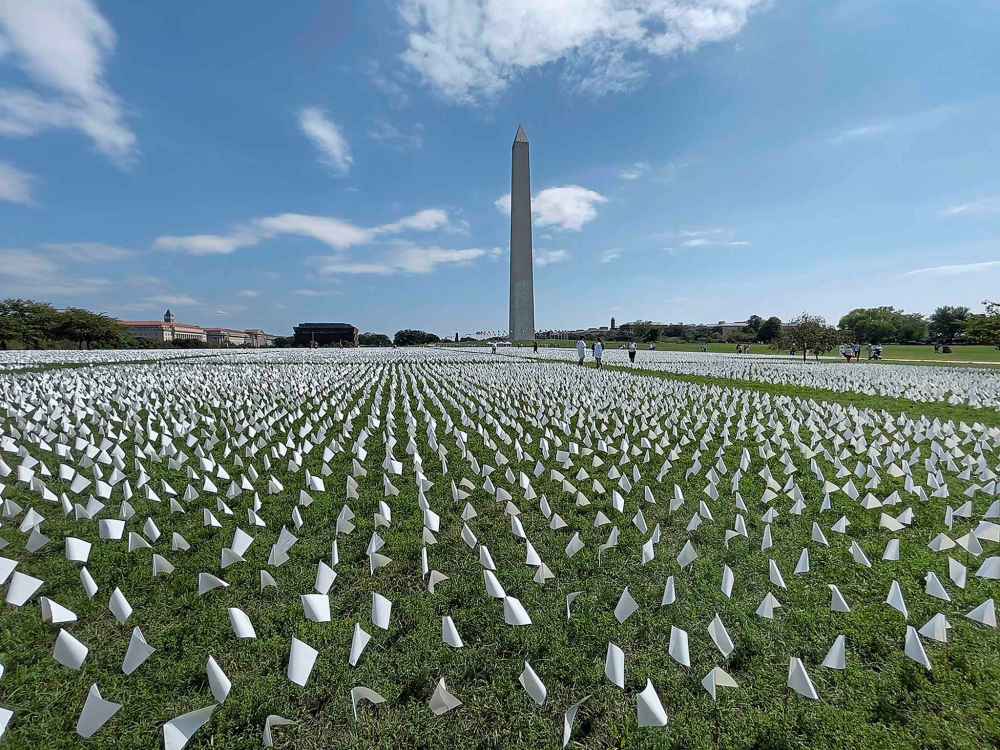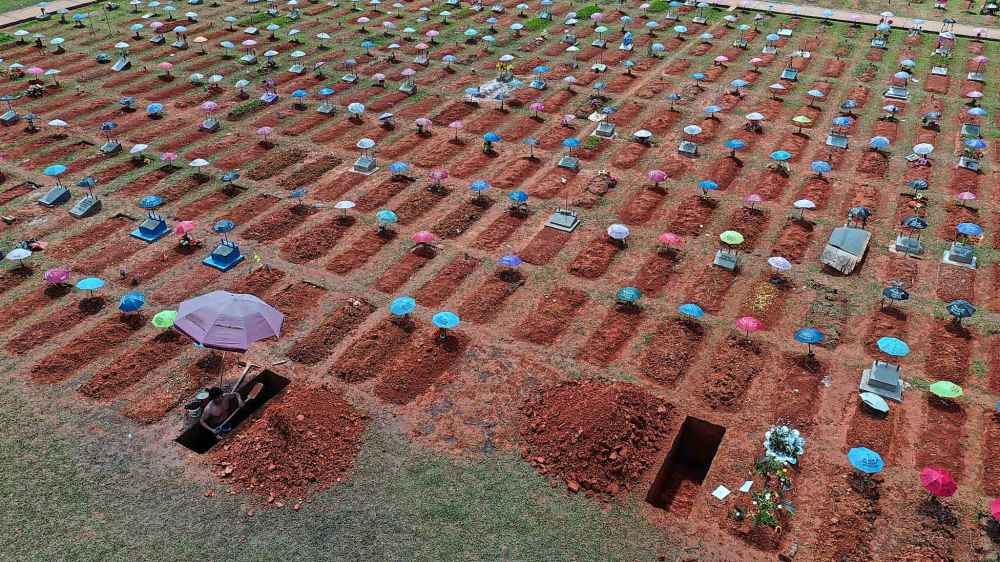Time for true count of COVID-related deaths
Advertisement
Read this article for free:
or
Already have an account? Log in here »
To continue reading, please subscribe:
Monthly Digital Subscription
$0 for the first 4 weeks*
- Enjoy unlimited reading on winnipegfreepress.com
- Read the E-Edition, our digital replica newspaper
- Access News Break, our award-winning app
- Play interactive puzzles
*No charge for 4 weeks then price increases to the regular rate of $19.00 plus GST every four weeks. Offer available to new and qualified returning subscribers only. Cancel any time.
Monthly Digital Subscription
$4.75/week*
- Enjoy unlimited reading on winnipegfreepress.com
- Read the E-Edition, our digital replica newspaper
- Access News Break, our award-winning app
- Play interactive puzzles
*Billed as $19 plus GST every four weeks. Cancel any time.
To continue reading, please subscribe:
Add Free Press access to your Brandon Sun subscription for only an additional
$1 for the first 4 weeks*
*Your next subscription payment will increase by $1.00 and you will be charged $16.99 plus GST for four weeks. After four weeks, your payment will increase to $23.99 plus GST every four weeks.
Read unlimited articles for free today:
or
Already have an account? Log in here »
Hey there, time traveller!
This article was published 05/05/2022 (1308 days ago), so information in it may no longer be current.
It has often been said the first step in solving a problem is to admit you have one. If that’s true, governments around the world are moving further and further away from finding a solution to the challenge of global pandemics.
How can we both assess the response to date and plan the response to future pandemics if we cannot agree on how many people have died from COVID-19?
The death toll has been one of the stickier points of contention between medical and scientific experts, political leaders and governments — and that segment of the population that disputes the idea COVID-19 poses any significant threat.
The expert group tends to believe deaths are under-reported; governments that seek to evade accountability for their shortcomings and the COVID-19 deniers say they are overstated.
This week, the World Health Organization issued an updated estimate of the number of people who have died as a result of COVID-19 in the past two years — either directly of the disease caused by the novel coronavirus or because they either did not or could not access life-sustaining care while health-care systems were being inundated by pandemic cases.
The WHO estimate: more than 15 million.
It’s an astounding number, which nearly doubles the previous estimate of six million deaths.
It is important to note the global panel of medical and scientific experts that produced the earlier number have always maintained gaps in reporting from many countries meant the actual number of deaths was likely much higher. That it is more than double exceeded even the experts’ worst case scenarios.

To understand why this new number is reliable, you have to get deep into the updated methodology.
Given the enormous gaps in official death reports, the WHO panel went out into the field, collecting data from individual countries on all reported deaths, local and regional information from health authorities and household surveys.
All that data was then combined with mathematical modelling to account for “excess mortality,” or the total number of additional deaths in 2020 and 2021, over and above regular rates.
This new estimate found most of the loss of life from COVID-19 occurred in 2021, when more contagious variants rampaged. The WHO panel estimated total global deaths in that one year were 10 million higher than it would have been without the presence of COVID-19.
Not surprisingly, the countries with the highest undercounts included some of the most densely populated, middle-income countries in the world: Pakistan, Nigeria, Indonesia and Mexico. However, significant undercounts were also found in the United States, Great Britain, Italy, Germany, Poland and Ukraine.
Then there’s India, which has strenuously disputed the WHO methodology. In the new estimates, India accounts for nearly one-third (4.7 million) of all excess deaths over those two years. The official Indian government estimate is 481,000.
An important thing to remember: this tendency of government to undercount deaths is, in and of itself, a bit of a global pandemic.
If you focus too much on maliciously shrinking the size of the problem, you are denying the existence of the problem at hand, and clearly not thinking about a solution.
Most Canadian provinces have been accused of undercounting COVID-19 deaths. Separate studies in this country have confirmed that, outside of Quebec, which has a very broad classification of COVID-19 deaths, total mortality has been under-reported by as much as 50 per cent.
Then there are the provinces that have worked actively to conceal the total number of deaths.
Rather than following the best practices, the Progressive Conservative government of Manitoba decided in March to redefine COVID-19 deaths to lower the total number of fatalities. The new definition was limited to those who died within 30 days of testing positive and those that tested positive in a post-mortem.
The revised Manitoba definition was denounced by medical and scientific experts who said: even if you try to exclude those people who have died because they could not get life-saving treatment in a health-care system crippled by the pandemic, the PC government was excluding anyone with long-term health complications that may result in death.
And here’s where we get to the issue of acknowledging our problems.
If you focus too much on maliciously shrinking the size of the problem, you are denying the existence of the problem at hand, and clearly not thinking about a solution.
The world was unprepared for COVID-19. When the next pandemic comes along — experts say it’s only a matter of when, not if — we need to do a much better job at minimizing the loss of life, not under-reporting deaths.
What’s particularly maddening is the evidence of excess mortality — particularly people who are dying because of a lack of access to health care — is all around us.
Delayed surgeries and diagnostic procedures have and will continue to result in unnecessary death. Longer waits to get into to an emergency room will, ultimately, translate into greater loss of life.
It’s time for governments around the world, including in Manitoba, to stop manipulating data on excess deaths and commit themselves to preventing excess deaths.
dan.lett@freepress.mb.ca


Dan Lett is a columnist for the Free Press, providing opinion and commentary on politics in Winnipeg and beyond. Born and raised in Toronto, Dan joined the Free Press in 1986. Read more about Dan.
Dan’s columns are built on facts and reactions, but offer his personal views through arguments and analysis. The Free Press’ editing team reviews Dan’s columns before they are posted online or published in print — part of the our tradition, since 1872, of producing reliable independent journalism. Read more about Free Press’s history and mandate, and learn how our newsroom operates.
Our newsroom depends on a growing audience of readers to power our journalism. If you are not a paid reader, please consider becoming a subscriber.
Our newsroom depends on its audience of readers to power our journalism. Thank you for your support.



